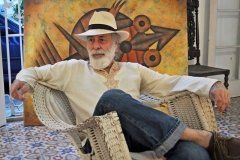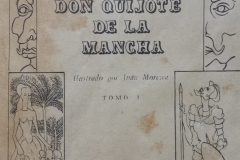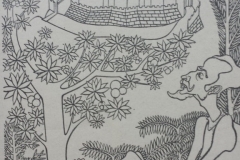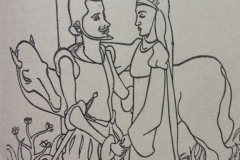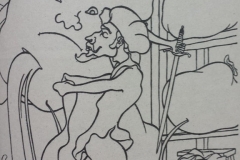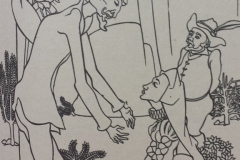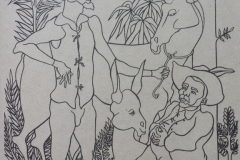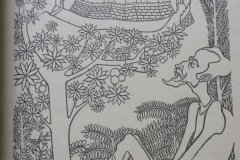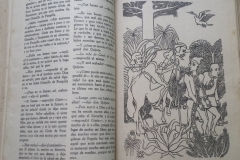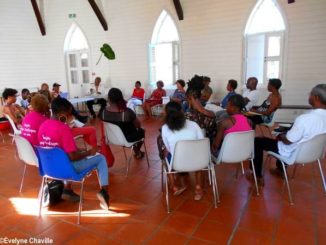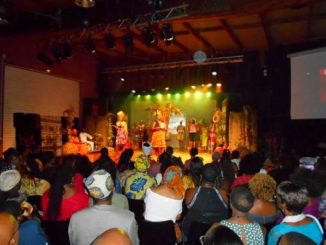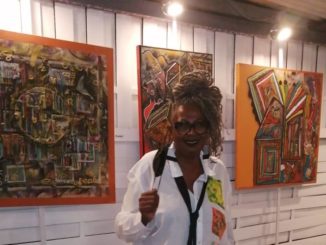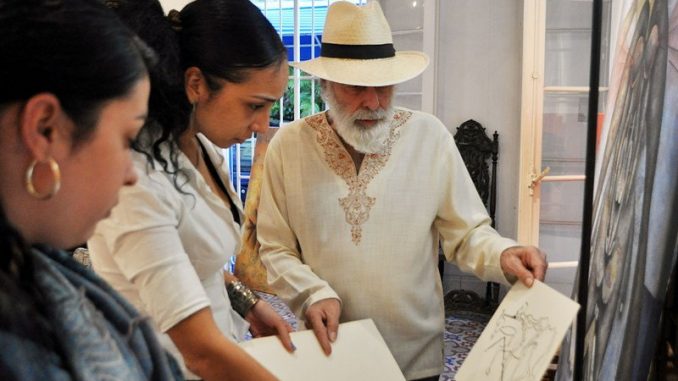
Juan Moreira (Havana, 1938) is a crazy painter. A madman by the genius which lives in him. Designer of billboards when he was still almost a child, commercial designer when he wa s young, teacher and painter when he became an adult, this is a man who keeps on his resume more than one gripping story to tell. Lover of Pablo Picasso and the Cuban Wifredo Lam, Moreira has a dedicated work within the Cuban artistic scene but beyond his pictorial work, he had the singular honor of being the first Cuban who illustrated Alonso Quijano, the ingenious gentleman Don Quixote of la Mancha.
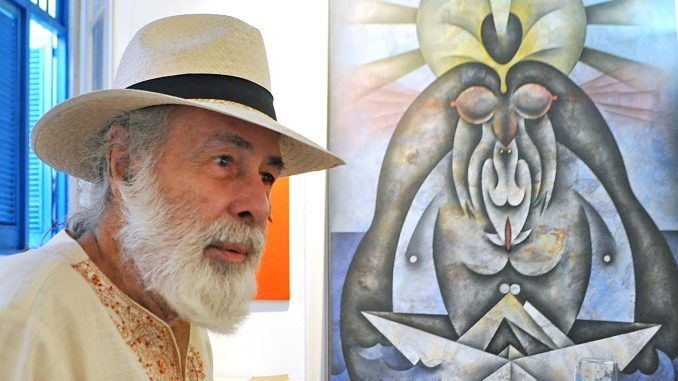
Major and paradigmatic work of the Castillan and universal literature written in 1605 by Miguel de Cervantes y Saavedra, Don Quixote was the first book published, in 1960, by the National Printing Office created by the Cuban Revolution.
This first edition inaugurated the Library of the People, whose main objective was to reach the humble reader, ignored for decades, and to manage to increase the collections of the Cuban homes. It appeared printed in four volumes with print-run of one hundred thousand copies and it had illustrations (already publised) by the Frenchman Gustave Doré and one picture by Paul Picasso.
In 1972, Cervantes’ text is reissued with illustrations made, for the first time, by a Cuban : Juan Moreira. From that time, there were many generations of Cubans who associated the chivalrous hero with these linear drawings, finely drawn, inserted into an exuberant and tropical nature, like Moreira’s portrayal created them.
The later editions in 1974 and 1980 – both published in two volumes by the Cuban Publishing house Art and Literature – also included the drawings of the painter.
Moreira, unintentionally, go down in the history of edition, art and literature of the island. It’s quite unusual for a plastic art artist.
Talkative, extrovert and often with this unusual gift for joking, the artist explains how he managed to be the illustrator of this major work of the Spanish language.
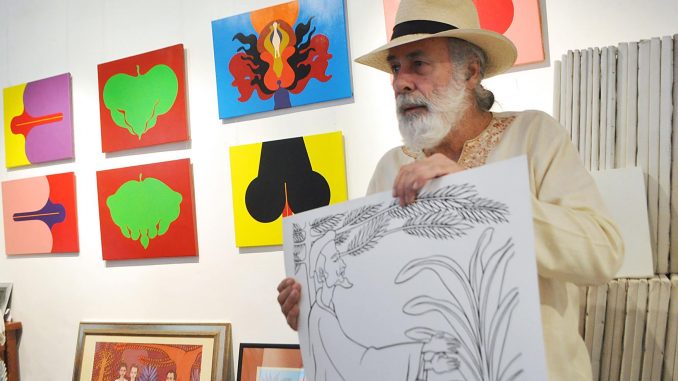
A tropicalized Quixote ?
Among his words, there is this history :
“I lived and I had my studio in Mercaderes. n°2, a small house after the Cathedral in Old Havana, which we called “The intellectuals’ House”, because there lived among others, the playwrights José R. Brene and Maité Vera, the painters Adigio Benítez and Loló Soldevilla, the writer Onelio Jorge Cardoso – for whom I illustrated several stories – and José Manuel Villa (Villita), a friend of mine, designer of the Institute of Book.
They gave Villita the responsability of working on the second edition of Don Quixote of La Mancha and he asked me to create the illustrations. I had never read the book and he lent it to me so that I read four or five chapters. I made three drawings, I brought them to him and he enjoyed them. At that time, I was working on what critics called my stage of magical realism and I realized the illustrations of Quixote in this style. So, I started to read it, I spent several months on the creation of illustrations, at that time, I also gave classes at San Alejandro Academy of Painting and worked for collective and personal exhibitions.
Quixote has 156 chapters, I did not illustrate them all, they did not give me time but every six or seven chapters, I made an illustration on a full page and several small illustrations of characters that recurred in the book.
That was how the destiny wanted I illustrate the Quixote. After the press thought that I was the first Cuban who had illustrated the Don Quixote. But all this was thanks to Villita’s proposal.
Many critics say that my version of Quixote is tropicalized, there are even some who say that it is my alter ego, but in reality I was satisfied with the design of the book, the line and the drawing althougth I would like to do more illustrations, but there was a delivery date.
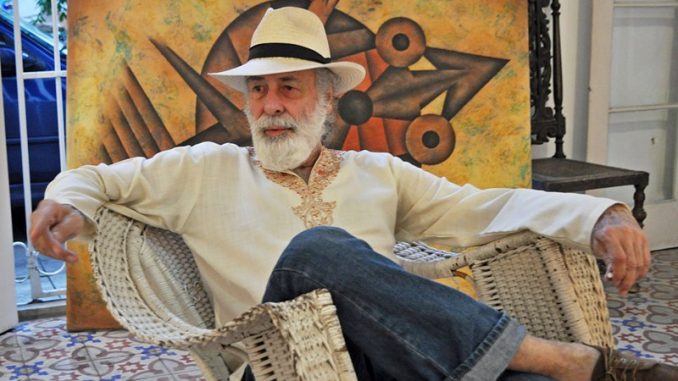
The stage of magical realism
Everybody interprets the book as he likes, I did not tropicalize it on purpose, I just got this idea this way. This has much to do with my stage of magical realism, my experiences, the historical and geographical context has emerged. About the sensitivity of the genre, I expressed my motivations, my ideas.
Then, came my second period of the erotic – organic – and now I am experiencing a stage inspired by African and indigenist roots.
I do not know if it is my alter ego or not. It was merely my style at that time.
After the illustrations, during the years, they introduced me as “the one who illustrated the Quixote” and not as the painter Juan Moreira. For me, it was a pride that they introduce me like that because it is a major work of universal literature, but my work is much more extensive.
If today they asked me to do it again, I think that I would not do it the same way. Now, I am experiencing the color and the drawing of the erotic stage and I continue to develop Africanist roots, thus that would be a Don Quixote totally different.”
But and again, we are sure, tropical or africanized Moreira’s Quixote could not part with the context of the vast Caribbean around us.

